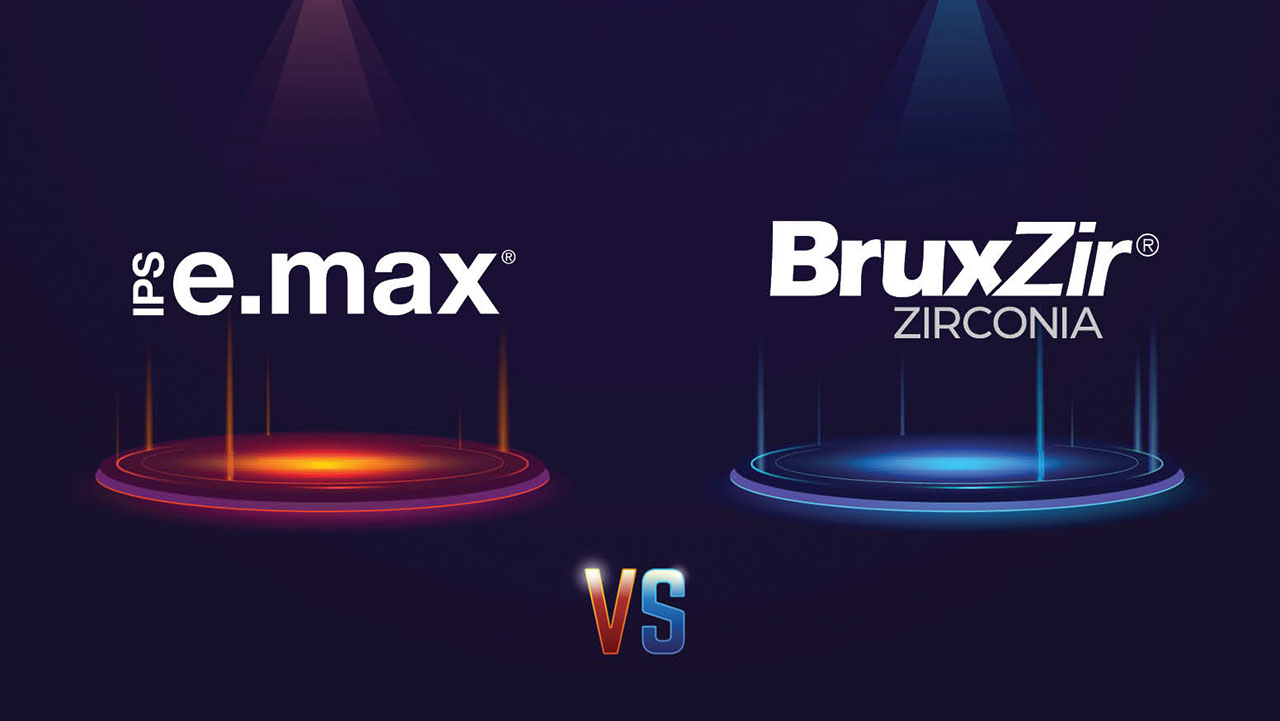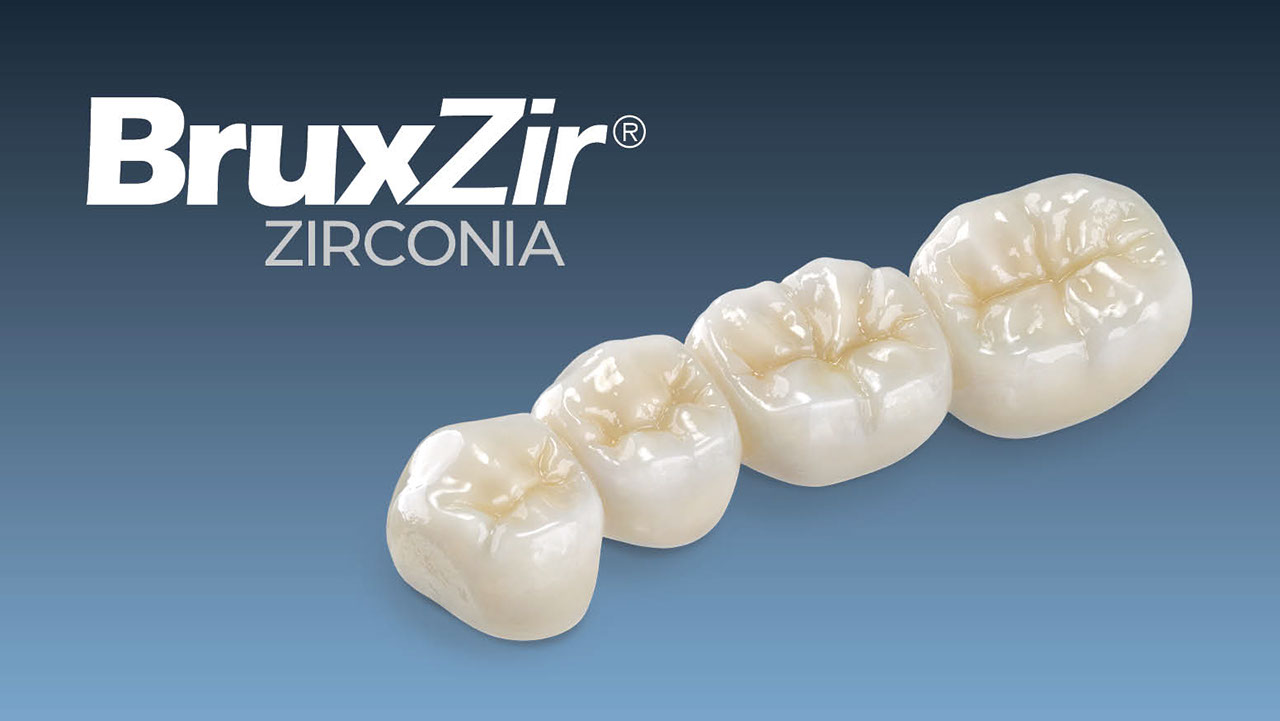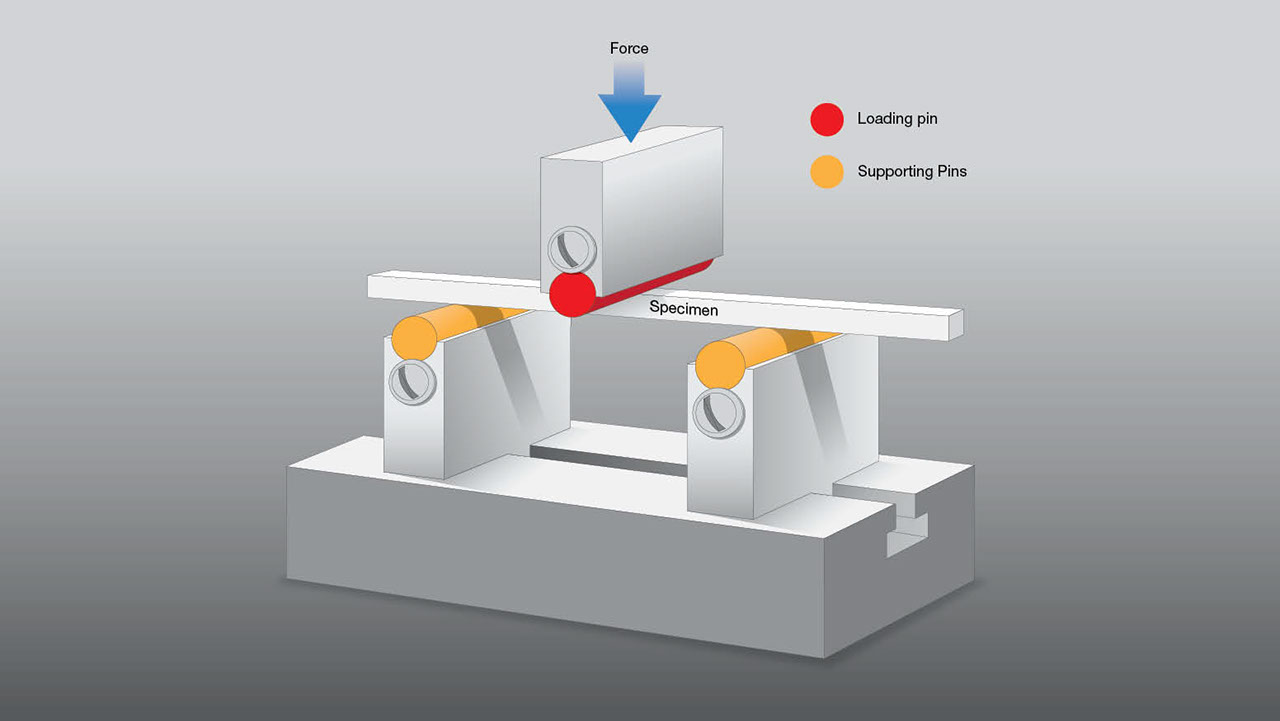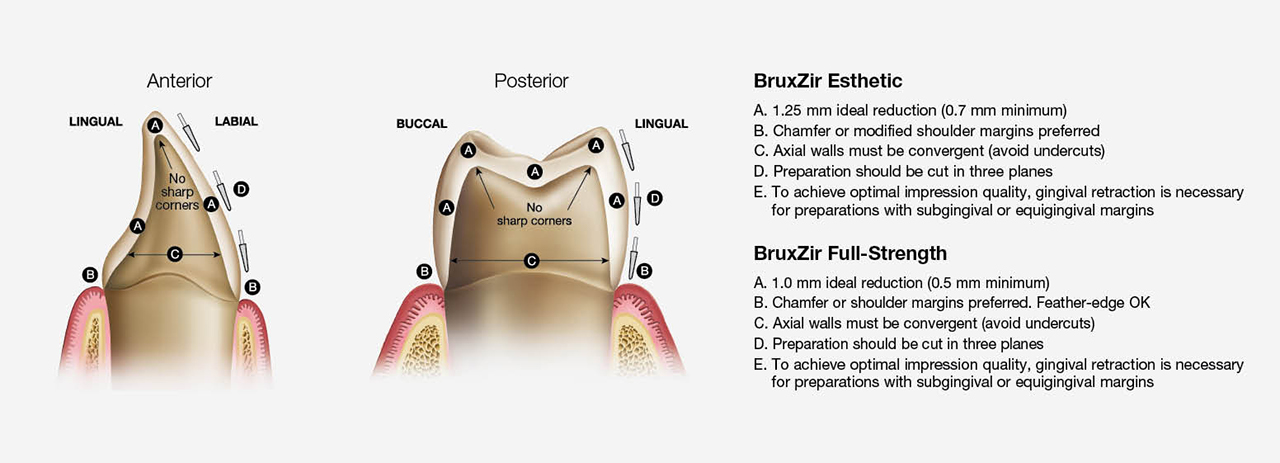REFERENCES
- ^ Ivoclar Vivadent sales figures. Available from: www.ivoclarvivadent.com/en_US/Products/Digital-Processes/IPS-e.max-CAD
- ^ Ma L, Guess PC, Zhang Y. Load-bearing properties of minimal-invasive monolithic lithium disilicate and zirconia occlusal onlays: finite element and theoretical analyses. Dent Mater. 2013 Jul;29(7):742-51.
- ^ Randi W, Randi A, Hill T. (2017). Evaluation of biaxial flexural strength and fracture toughness of a zirconia-reinforced dental ceramic. 47th Annual Session of the American College of Prosthodontists. Available from: highlights.ivoclarvivadent.com/dentist/en/ips-e.max-cad
- ^ Giordano RA 2nd, Pelletier L, Campbell S, Pober R. Flexural strength of an infused ceramic, glass ceramic, and feldspathic porcelain. J Prosthet Dent. 1995 May;73(5):411-8.
- ^ An independent, nonprofit, dental education and product testing foundation, Clinicians Report®, September 2020. For the full report, go to glidewell.com/bruxzir-10-year. Study results apply to BruxZir 2009 3Y zirconia.












